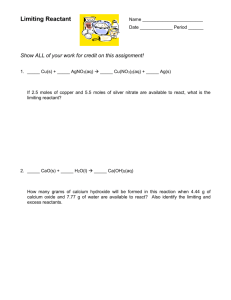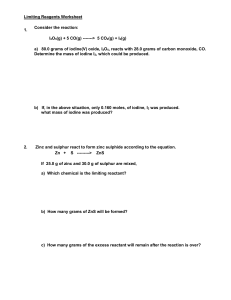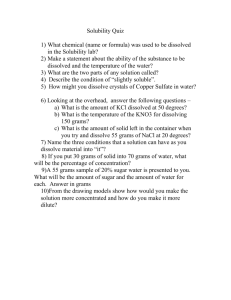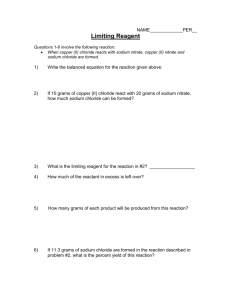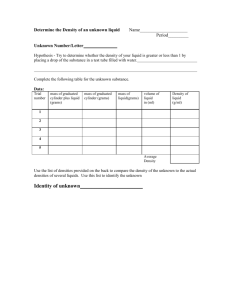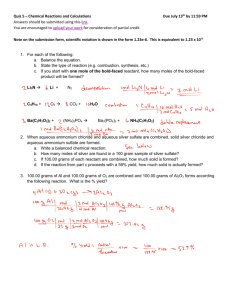Limiting Reactant Worksheet #2
advertisement
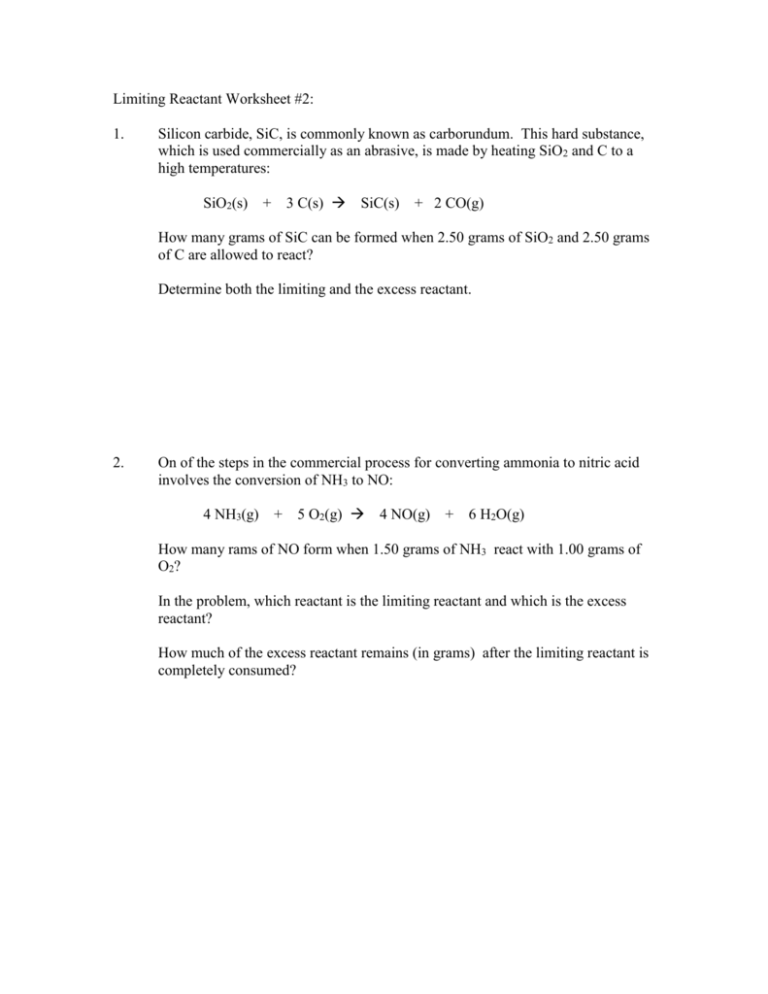
Limiting Reactant Worksheet #2: 1. Silicon carbide, SiC, is commonly known as carborundum. This hard substance, which is used commercially as an abrasive, is made by heating SiO2 and C to a high temperatures: SiO2(s) + 3 C(s) SiC(s) + 2 CO(g) How many grams of SiC can be formed when 2.50 grams of SiO2 and 2.50 grams of C are allowed to react? Determine both the limiting and the excess reactant. 2. On of the steps in the commercial process for converting ammonia to nitric acid involves the conversion of NH3 to NO: 4 NH3(g) + 5 O2(g) 4 NO(g) + 6 H2O(g) How many rams of NO form when 1.50 grams of NH3 react with 1.00 grams of O2? In the problem, which reactant is the limiting reactant and which is the excess reactant? How much of the excess reactant remains (in grams) after the limiting reactant is completely consumed? 3. Consider the following reaction: H2S(g) + 2 NaOH(aq) Na2S(aq) + 2 H2O(l) How many grams of Na2S are formed if 2.05 grams of H2S is bubbled into a solution containing 1.84 grams of NaOH, assuming the limiting reagent is reacted completely? 4. A student reacts benzene, C6H6, with bromine, Br2, in an attempt to prepare bromobenzene, C6H5Br.: C6H6(l) + Br2(l) C6H5Br(l) + HBr(aq) What is the theoretical yield of bromobenzene in this reaction when 30.0 grams of benzene reacts with 65.0 grams of Br2. If the actual yield of bromobenzene was 56.7 grams what was the percentage yield?

